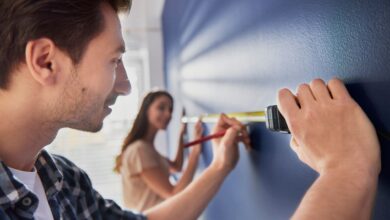5 Common Lawn Drainage Problems And How To Solve Them

Homeownership is a part of the American dream. However, owning a home also comes with the responsibility of maintaining the property. For some, clear skies and sunny days bring them great joy.
However, when the clouds darken, and the rain begins to fall, some homeowners look out their windows to see their once-dry lawns looking more like a swampy mess. Lawn draining issues are a reality for some. Fortunately, there are ways to eliminate this problem.
Chicago suburb homeowners with lawn drainage problems can consult with Naperville drainage specialists who can inspect their property and diagnose the rain pooling culprit. No matter the drainage issue, they’ll have a solution. You don’t live in a muddy yard, and you can speak to a drainage specialist to get rid of it.
Top Common Lawn Drainage Problems and Their Solutions
Most lawn drainage issues are easily diagnosed. Some can be quite obvious, while others may require the experienced eye of a lawn drainage professional.
Either way, rest assured, no matter what your drainage culprit is, there is a solution to get that water going where it’s supposed to go. Here’s a look at the five most common lawn drainage problems and what to do to solve them.
1. Inadequate Home Foundation Elevation
One of the most common property water drainage problems takes place at a home’s foundation. Pooling water around the foundation can lead to structural damage and basement flooding. The issue is improper grading near the foundation. Unless there’s a gradual slope away from the house, the water will have nowhere to go.
- Solution – Grade the property to slope away from the home. You’ll want the ground to drop approximately one inch per foot for at least five to ten feet away from the house.
2. Poor Flower Bed Designs
If you have water pooling around your home, it could be due to a bad flower bed design. Much like inadequate grading of the property around a home, creating flower beds that don’t allow for proper water drainage will result in too much standing water. Standing water will provide breeding grounds for mosquitoes and flies, both of which are unwanted pests.
- Solution – Redesign these areas to ensure that the flow of water is away from the home’s foundation. If this isn’t possible, consider relocating the flower beds to a more appropriate area.
3. Gutter and Downspout Issues
Damaged, clogged, or improperly located gutters and downspouts can be ineffective in moving water to where it should go. During times of heavy rainfall, gutters and downspouts that aren’t doing their job will simply dump copious amounts of water that may not have anywhere to go. Pooling water around a home’s foundation is not what you want.
- Solution – Repair, unclog, or replace gutters and downspouts. An effective and easy solution for downspout issues is to attach downspout extenders that can get the rainwater away from your home’s foundation.
4. Hardscape Drainage
Many homeowners have built beautiful hardscape entertainment areas. However, some DIY builders haven’t taken into account the issues of proper water drainage. Pooling water can not only eventually damage these areas, but after rainstorms, they’ll need to have the water cleared so they can be used and also to ensure that biting insects don’t use them as breeding pools.
- Solution – Either regrade the surfaces so that water drains off of them or rebuild them with a drainage system such as grates to allow the water to naturally go into the soil.
5. Water Pooling in Parts of the Lawn
If parts of your lawn look like small ponds or marshland, you’ll need to figure out why the water isn’t either naturally being absorbed by the ground or draining off of the property. Common culprits are compacted clay-like soil that can’t absorb rainwater or property that has low spots. Both have fairly easy fixes.
- Solution 1 – If the issue is compacted soil, you can aerate the ground by piercing it with a pitchfork or purchasing special aerating shoes that have long spikes on the sole.
- Solution 2 – For low spots on the property where water typically pools after rainfall, you can remove the grass and build up the area with topsoil until it’s level with the surrounding area and then reseed with grass seed.
Eliminate Common Lawn Drainage Problems Explained
If pooling water is a problem on your property, it’s something that needs to be addressed. Pooling water can damage a home’s foundation and can also quickly kill your grass, perennials, and shrubs. It can also provide a breeding ground for biting insects. Fortunately, most lawn drainage problems have an easily identified culprit.
Handy homeowners may want to tackle the task of fixing their lawn drainage issues with their own hands. However, some solutions may require the experience of a lawn drainage professional. They’re armed with the knowledge and the tools to correct any lawn drainage issue.



